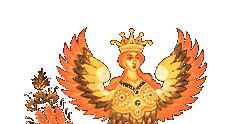In 1833, Karl Briullov painted the finishing touches on his monumental “The Last Day of Pompeii” and threw open his studio door for the world to see. Painting in Italy, he had labored six years to produce his masterpiece. The large, complex painting was populated by twenty-seven human figures. Each of these twenty-seven people expressed an emotion on his or her face—alarm, fright, agony, resignation, or the quiet repose of death—as the destruction rained down upon them from the exploding Mount Vesuvius. Many thought the painting prophesied the impending doom of the Russian aristocracy.
The reaction in Italy was one of astonishment and acclaim. His fame became so great that the academies of art in the city-states of Florence, Milan, and Bologna elected him to membership, the jury at the Paris Art Salon awarded the painting a gold medal, and Tsar Nicholas I summoned him home to do a painting for him.
The story of Karl Briullov cannot be told without “The Last Day of Pompeii” and the story of Russian fine art cannot be told without Briullov. Not only was he the first Russian painter of world renown, he was also Russia’s first Romantic artist introducing Western art and Romanticism to Russia. He greatly influenced the painting of the 1840s and 1850s, particularly the artists Ge, Aivazovskii, Fedotov, and Repin.
Karl Briullov (1799-1852) was born to an artistic family and at the age of nine was sent off to the preparatory school for the Russian Academy of Arts at St. Petersburg. In 1815, he graduated from the school and entered the Academy. He displayed such enormous talent that everyone expected him to surpass his teachers by graduation, which he did.
The Academy, indeed all Russian artists of that time, slavishly adhered to the precepts of Classicism, imported by Peter I and Catherine II. Briullov mastered Classicism and went on to win the Academy’s gold medal for his graduation work. He was to go to Italy, however, where he came under the influence of the Italian and French Romanticists, especially Delacroix. Where Classicism emphasized balance, order, and simplicity and required that the subject be someone of note, the Romanticist emphasized imagination, independence, and emotion and painted ordinary people as well as the famous. With “The Last Day of Pompeii”, Briullov became a confirmed Romantic and left Classicism, with its rigid rules of art, forever.
“The Last Day of Pompeii” established Briullov’s reputation, but his greatest legacy is found in his portraiture. In both Italy and Russia, the rich and famous pleaded to sit for him. In his portraits, Briullov succeeded in capturing the heart and spirit of those he painted. Here we also feature three of his most famous portraits.
|



